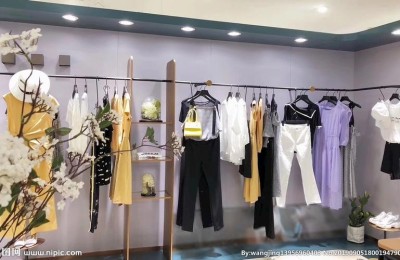The Sino-US trade war, which lasted for 464 days, finally came to a halt after the heads of state of China and the United States reached a phased outcome at the meeting. Previously, due to the continuation of the Sino-US trade war, domestic textile companies’ foreign trade orders were sluggish. It was originally thought that with the suspension of the Sino-US trade war, the foreign trade market would also recover. However, contrary to expectations, the foreign trade market encountered another obstacle!

Raw material prices Remaining high, foreign trade companies are blocked from receiving orders
After the easing of Sino-US trade relations, PTA was the first to be affected, with prices rising sharply. The production and sales of polyester yarns also exploded, thus driving the price of polyester yarns to continue to rise. rise. To this day, although the price of polyester filament has dropped, compared with the beginning of June, the price increase of polyester filament products is still nearly 1,000 yuan. The sharply rising prices of raw materials have put weaving companies under cost pressure. It is difficult to increase the price of gray fabrics in a short period of time. Most products are already on the verge of losing money, and some products with high weight have already suffered losses.
The foreign trade market was overall sluggish in the first half of the year, and the number of orders received by foreign trade companies dropped by 50% compared with previous years. The easing of Sino-US trade relations has brought about a small wave of foreign trade orders. Just when foreign trade companies were happy, the prices of raw materials rose sharply, and companies encountered considerable obstacles in receiving orders!

Foreign trade order Loss, company canceled in tears
The person in charge of a foreign trade company A in Shengze area said: “There have not been many foreign trade orders this year. I finally got an order recently, and the price given by the customer was low. , but the price of raw materials has increased, and the weight of the filament is high on all sides. Calculated, this order is a loss, so I have to not accept it.”
Coincidentally, a foreign trade company B in Shengze area Just encountered the same problem. The person in charge said that foreign customers requested a price quotation for a double-layer, four-sided elastic in early June. The order was recently placed, but with the current raw material prices, profits were lost and the order had to be cancelled.
Seeing this, some people will definitely question. Although the price of raw materials has increased, the price of gray fabric has not increased. Why can’t the order be completed? Good question, this is the pain point of weaving manufacturers!
High-priced raw materials and low-priced gray fabrics have become the pain points of weaving enterprises
Weaving in the recent stage Manufacturers use raw materials purchased at high prices but sell gray fabrics at low prices. For example, the price of polyester yarn has increased by about 1,000 yuan. Based on conventional polyester taffeta, pongee and other low-weight gray fabrics, the cost of gray fabric per meter has increased by 0.1-0.2 yuan/meter. For gray fabrics with high gram weight, the cost per meter of gray fabric will increase by 0.4-0.5 yuan/meter!

The market situation is sluggish, but the weaving factory still has a large number of workers to feed. It is unrealistic to reduce the operating hours, but the inventory is getting higher and higher. Come more and more. In order for a company to operate normally, it must have sufficient liquidity. It is unrealistic to hold on to the gray fabric without selling it. In the end, it can only compromise to the low price of gray fabric and swallow the rising costs in tears. As for the orders received by weaving manufacturers themselves, knowing full well that they are losing money, they would rather cancel the orders and continue to produce some conventional products in order to maintain capital.
With the suspension of the Sino-US trade war, the foreign trade market has indeed recovered to a certain extent. However, high-priced raw materials have become a stumbling block for textile companies to receive orders. When an order is canceled, the loss is not just as simple as an order, but also the trust and relationship with the customer, especially for those who value trust very much.For well-known foreign customers, the impact of canceled orders is very large.
Despite the sluggish foreign trade market, foreign trade companies encounter obstacles in receiving orders , but the editor believes that these situations are only temporary. According to the practice of previous years, the foreign trade market mainly develops orders for the second half of the year in June and July, and orders will be placed intensively in September and October to start orders for next spring.
Editor’s Note
Therefore, looking at the market in the second half of the year, foreign trade orders should be enlarged, but exchange rates, costs, prices, tariffs and other aspects will still affect the foreign trade market. Key factor.
</p






